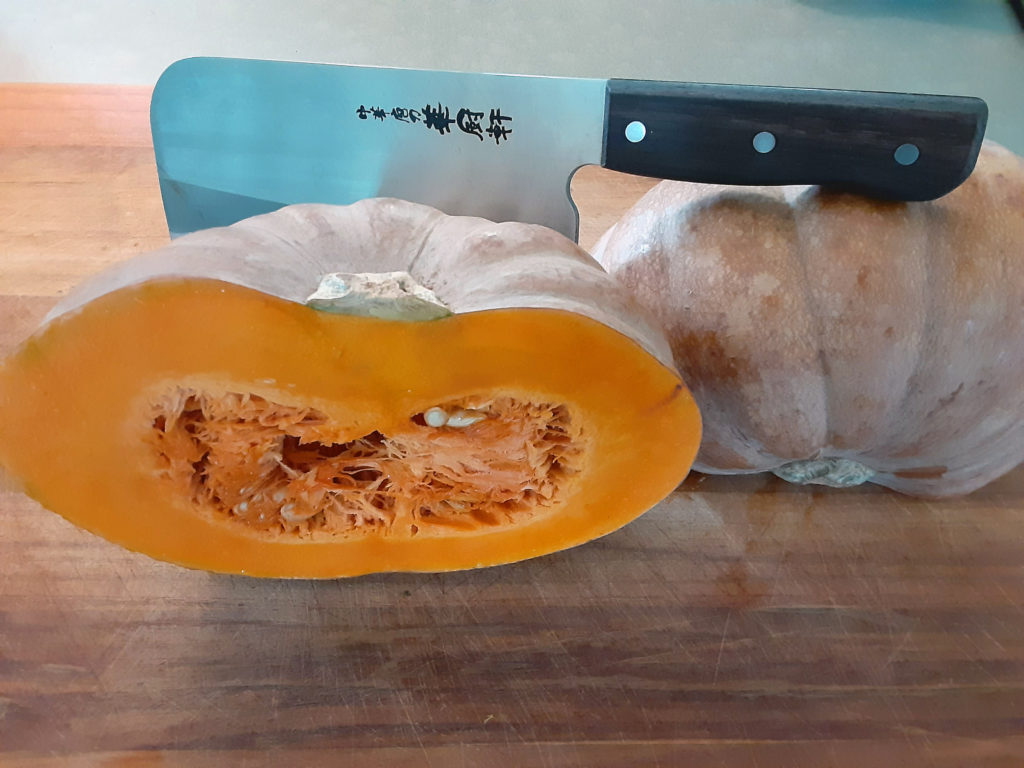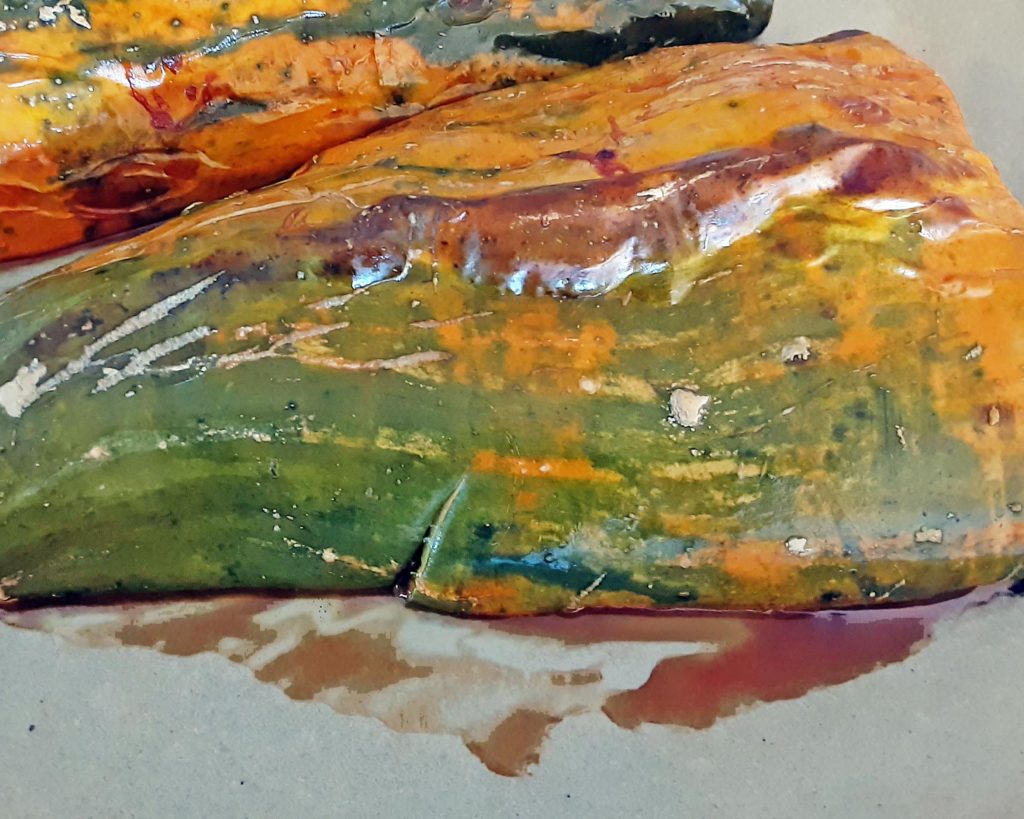A nicely baked squash is, to me, a perfect food all by itself. There’s nothing like a well-grown, appropriately stored winter squash, simply baked to develop concentrated rich roasted caramel flavors throughout. As a master recipe, this also gives you a way to maximize the great squash flavor in other recipes that call for baked squash, mashed squash, or squash puree. If you bake a good squash like this and then finely mash or blend it, you’ve got the core ingredient for the best pumpkin pie you’ve ever tasted.
It’s a simple recipe and the magic is in the details. First, baking squash cut side down concentrates the flavors and sugars against the pan within the peel of the squash. The magic is completed by cooking the squash the right amount of time, until you see its natural sugars turning very dark brown. It’s wonderful as is, served on a plate beside a main dish or spooned from squash to mouth for lunch or breakfast.
Which squashes work best to cut and bake?

One hope I have for this site is that readers learn which squashes are in which “clan” (totally unscientific term!) among the three major squash species: maxima, moschata, and pepo. Once you get to know these clans, you’ll understand that species has a lot to do with the different squashes’ taste, texture, and how to cook them. Cucurbita moschata squashes such as butternut, honeynut, calabaza, and Thai pumpkins are my favorites for the baked squash treatment.
Among Cucurbita pepo types, sweet dumpling and winter luxury pie pumpkin are tasty baked. Most store-bought acorn and delicata squashes are less sweet and may yield a less wonderful result, or can be deliciously doctored up with butter, maple, sweet spices, or other creative additions.
Cucurbita maxima includes the dry, flaky, meaty squashes like kabocha, kuri, and turban, which often do better steamed or stewed than baked in a plain way without moist add-ins or fillings. But other C. maxima types such as baby blue hubbard, buttercup, and sweet meat are a little juicier and bake up nicely. Finally, pink banana, candy roaster, and (the big) blue hubbard are C. maxima squashes that don’t fit in your oven never mind on a baking sheet when cut according to this recipe, but do make a great baked squash when cut to fit!
Tetsukabuto squash, a moschata/maxima cross, bakes beautifully.
Jump to RecipeWhat the heck is squash liquor, and why does it matter?

If you live in the American South, or just like southern food, you might have heard the term “pot liquor,” sometimes spelled “likker.” These are the juices that remain after slow-cooking greens or beans and they play an essential role in giving southern sides their flavor. Squash liquor is the sweet, concentrated juices that come out of a squash as it bakes.
You know you’ve got a not-so-great squash when the liquor that comes out while baking is voluminous, swamping your baking sheet, and has no flavor at all. This is what happens if you bake an average Halloween pumpkin.
But you’re baking something better. Peek in the oven and watch for clear squash liquor to begin to seep out around the edges of the squash. This means the squash is hot all the way through and beginning to concentrate its flavor. Because a good winter squash is high in natural sugars, in the hot oven these juices will begin to caramelize as the water cooks away and the sugars pass the boiling point. That’s why you are baking at 400 degrees: you are making a kind of caramel, not only around the squash, but also within the flesh itself where it is touching the pan.
The juices will at first be totally clear. Within 5-10 minutes they’ll start to turn a light caramel brown, as in the photo. Now, watch closely as they turn dark brown beside the squash and likely black where they’ve run to the edge of the pan. This is when your baked squash has reached perfection. The squash liquor may be chewy like caramel or crisp like toffee. Yes, vegetable candy is a weird thing to think about, but that’s what you’ve just made.

Master Recipe: Baked Squash
Equipment
- Sharp, heavy knife
- Parchment paper
- Baking sheet
Ingredients
- 1 winter squash
- 1 tsp olive or avocado oil
Instructions
- Preheat oven to 375ºF/190ºC. Cover a baking sheet with parchment.
- Cut squash in half from the stem to the base. Make sure you have a heavy, sharp knife and a stable surface.
- Use a sturdy spoon to scoop the seeds and pulp from the cavity.
- Pour the oil into the cavity of one squash and from there, use your fingers to rub it all over the cut sides of both squashes.
- Place the cut squash face down on the sheet and place in preheated oven.
- Remove from oven when squash liquor (sugary juices) are showing around the cut squashes and have turned a candied dark brown with burnt black edges, about 40 minutes for a smaller squash like honeynut, up to an hour — the time will vary greatly based on the size and age of your squash. Newly-harvested squashes are wetter and take longer to cook.
- Cut in serving-sized chunks, such as ¼ of an average butternut squash per person, plate up, and serve. Provide any topping such as butter, salt, pesto, cheese, salsa, soy sauce, or whatever it is that may fit well with the rest of the meal that day, but encourage everyone to enjoy how incredibly delicious this squash is perfectly plain, just the way it is!

Comments are closed.